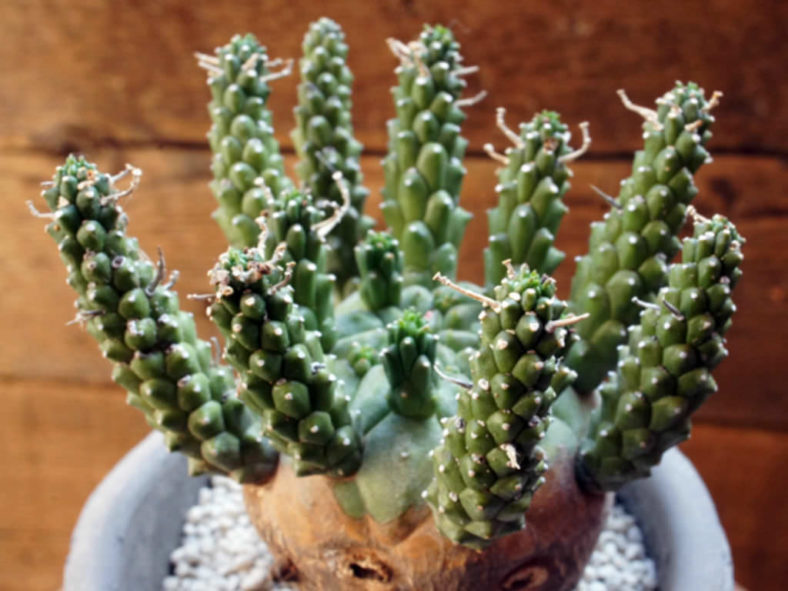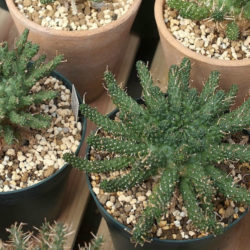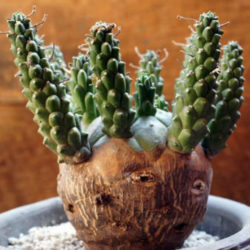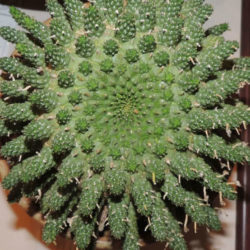Scientific Name
Euphorbia gamkensis J.G.Marx
Accepted Scientific Name
Euphorbia decepta N.E.Br.
Synonym(s)
Euphorbia decepta subsp. gamkensis
Scientific Classification
Family: Euphorbiaceae
Subfamily: Euphorbioideae
Tribe: Euphorbieae
Subtribe: Euphorbiinae
Genus: Euphorbia
Description
Euphorbia gamkensis is a small succulent with a large basal stem and a few rows of gray-green, outwardly pointing branches that emerge from its flat, green upper surface. It grows up to 5.2 inches (13 cm) tall. The caudex is more or less cylindrical and reaches 2.4 inches (6 cm) in diameter. As it thickens, more new branches will appear right in the center. The branches are covered in irregularly hexagonal tubercles. Scattered whitish stalks can be seen on the older branches where small greenish-yellow cyathia (false flowers) had bloomed in the past.
The small cyathia are reddish with hints of yellow and green and appear in summer. Fruits are three-lobed capsules.
Origin
Euphorbia gamkensis is native to South Africa. It is a rare and endangered plant found only near Calitzdorp in the Western Cape province, and it is usually listed as a form of Euphorbia decepta.

Hardiness
USDA hardiness zone 10b to 11b: from 35 °F (+1.7 °C) to 50 °F (+10 °C).
How to Grow and Care
Euphorbias are very easy to care for. They require a little pampering to become established, but once they are, they are self-sufficient. More die from too much care and watering than from neglect.
Euphorbias need well-draining soil and lots of sunlight. They are not particular about soil pH but cannot tolerate wet soil. Unlike most succulents, Euphorbia does not handle long periods of drought well. It may need weekly watering during the summer. Water whenever the soil is dry several inches below the surface. Water deeply, but don't let them sit in wet soil, which can cause root rot. Add some organic matter or fertilizer to the planting hole. If you are growing them in containers or your soil is poor, feed them with a half-strength fertilizer monthly.
Euphorbia can be grown from seed, but they can be difficult to germinate (or even find). It is usually propagated by cuttings. This can be tricky because of the exuding sap. Rooting hormone is recommended with Euphorbias.
See more at How to Grow and Care for Euphorbia.
Links
- Back to genus Euphorbia
- Succupedia: Browse succulents by Scientific Name, Common Name, Genus, Family, USDA Hardiness Zone, Origin, or cacti by Genus
Photo Gallery
Click on a photo to see a larger version.


